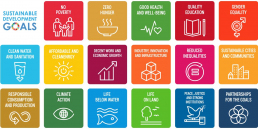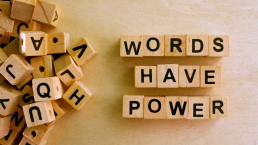Non-Violence

The “Non-Violence” sculpture is on display at the United Nations [UN] Visitor’s Plaza. This sculpture, which is also known as “Knotted Gun,” is made by Swedish artist Carl Fredrik Reutersward. It was originally created as a memorial tribute to the legendary singer and songwriter, John Lennon, after he was killed in 1980. The Government of Luxembourg donated the bronze sculpture to the UN in 1988.
This sculpture, which stands for peace and hope, is a signature logo of the Non-Violence Project Foundation. The Non-Violence Project Foundation advocates to the younger generation that conflict can be resolved without violence and that we can all make a difference. Former UN Secretary General Kofi Annan remarked that the sculpture isn’t just a cherished piece of art but a powerful symbol.
Say No to Violence
On June 15 2007, the United Nations General Assembly decided to observe the International Day of Non-Violence each year on October 2, which is the birth anniversary of Mahatma Gandhi who inspired the non-violent movement across the world. The objective of the day is to spread awareness about the culture of peace, tolerance, understanding, and non-violence.
Non-violence doesn’t just mean not committing violence, but it also includes non-violent protests. The UN explained that non-violent action is a technique by which people—who reject passivity and submissiveness, and who see struggle as essential—can express their conflict without violence.
Every year, the United Nations and non-governmental organizations raise awareness of non-violence by holding seminars, lectures, and online/offline campaigns for the Day of Non-Violence. In a message commemorating the International Day of Non-Violence 2020, Secretary-General António Guterres reminded everyone to stop the fighting,
“On this year’s observance, we have a special duty: stop the fighting to focus on our common enemy—COVID-19. There is only one winner of conflict during a pandemic: the virus itself. As the pandemic took hold, I called for a global ceasefire,” said Secretary-General António Guterres. He continued, “Today we need a new push by the international community to make this a reality by the end of this year. Ceasefires would ease immense suffering, help to lower the risk of famine, and create space for negotiations towards peace.”
Conflict and Violence
The advancement of a knowledge-based economy in the 21st century has led to many problems. These problems include increased polarization, radical climate change, radicalism, discrimination, as well as religious, social, and cultural identity issues. These conflicts between individuals, regions, and countries have resulted in numerous daily violence, regional conflict, and war between countries.
According to the Global Violent Deaths Scenarios published by Small Arms Survey 2019, there were approximately 589,000 people who lost their lives in 2017 due to violent acts. This figure is significantly more than 2016 (565,000 violent deaths), and nearly as many as 2014 which was the deadliest year of the last two decades. In terms of deaths per population size of 100,000, the rate of violent deaths was substantially higher in 2017 (7.80%) than in 2016 (7.56%) and 2015 (7.70%).
Violent acts are happening even at this moment.
If conflict results in violence, then why don’t we reduce violence by understanding and cooperating with one another?

Leave No One Behind
In 2015, the UN’s 193-member state adopted Sustainable Development Goals [SDGs]. The SDGs are the universal calls to action to end poverty, protect the planet, and ensure that all people enjoy peace and prosperity by 2030. The 17 SDGs contain integrated directions for the future and plans to achieve the aforementioned goals.

The SDGs aim to ensure that everyone enjoys a happy life. Achieving the SDGs requires the partnership of governments, private sector, civil society, and citizens alike. The 17th goal proves this fact.
Leave No One Behind.
Everyone must work together in order to make everyone happy.
*General Issues: poverty, diseases, education, gender equality, refugee, conflict, etc.
*Economic and Social Issues: technology, housing, labor and management, employment, production and consumption, social structure, law, internal and external economy.
*Environmental Issues: climate change, energy, environmental pollution, water, biodiversity, etc.
The UN has emphasized that the activities of the youth are necessary for conflict resolution, understanding, and communication.
“KindnessMatters for the SDGs”
UNESCO Mahatma Gandhi Institute of Education for Peace and Sustainable Development [MGIEP] has recently launched a global campaign called #KindnessMatters which is directed towards the world’s youth for the upcoming International Day of Non-Violence.
The #KindnessMatters campaign aims to mobilize the youth to achieve the SDGs through acts of kindness. Online platforms are provided for the youth to share acts of kindness that exhibit ways to achieve the global mission (climate change, migration, diversity, social harmony, etc).
UNESCO said that acts anchored on the competencies of kindness, empathy, and compassion form the foundation of a more sustainable future. The performance of these acts, especially by the youth, are more institutionally recognized than any other skill in solving social and economic issues. This is the key to the success of the SDG implementation and the progression towards non-violence.
They thought the youth were in the midst of these changes.
UNESCO specifically targets young people (ages 15 to 35), focusing on their capacities as future leaders who are well-versed with the Internet and social media, to achieve the SDGs through their acts of kindness.
According to the State of World Population 2014 Report issued by the UN Population Fund, the world’s youth population (ages 14 to 24) reached 1.8 billion, the highest in human history; this is equivalent to 25% of the world’s population. They anticipate that the actions of young people will promote change and the success of the SDGs.
“Words Are More Powerful Than a Sword”
On October 2, 2020, ASEZ university students launched a campaign entitled “Words Are More Powerful Than a Sword” for the International Day of Non-Violence.
Words are essential in our daily lives.
You might say words carelessly, and it can change someone’s life or leave indelible scars. Words can also cause conflict.
However, our words can solve conflict, comfort someone, and share warmheartedness.

During this campaign which lasted about ten days, students resolved not to commit verbal abuse, but rather share uplifting words both online and offline.
You are precious
You are an important person.
I love you.
Thank you.
I support you.
I will always be with you.

Activities for non-violence do not require grandiose actions.
It can be done through your small acts of kindness and your few words.
Together with young people!

RELATED POSTS
Nothing found.

